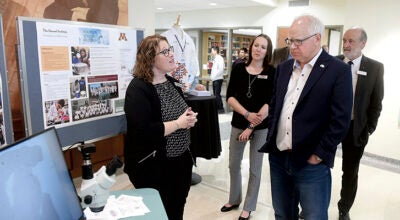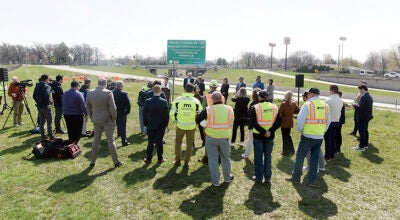Report analyzes community needs
Published 9:53 am Thursday, April 8, 2010
Local officials tend to overemphasize how big of a problem certain issues are to Mower County residents.
That’s just one of the findings of the recently completed Mower County United Way community assessment project, which analyzed local assets as well as community needs. The information was presented to City Council Monday, and some of the facts and figures could play key roles in shaping future policy decisions.
The study looked at 10 areas of Mower County “need,” including housing, health care and employment availability. In each area, survey respondents were asked whether having access to the particular necessity was a problem within their households, and if so, how big of a problem. “Key informants,” or Mower County elected officials and community leaders, were then asked how much of a problem these issues are in the community.
Across the board, the key informants evaluated areas as being bigger concerns than households that responded to the survey.
City administrator Jim Hurm said he was surprised to see the key informants respond so much differently than most households, but added that seeing the numbers will allow local leaders to better grasp what citizens want and need.
“We really need to analyze it and study it,” said Hurm, who was one of the key informants questioned for the project. “That’s why we have good data.”
However, Mandi Lighthizer-Schmidt, the executive director of the Mower County United Way, said she wasn’t nearly as surprised about this result.
She said because the key informants’ jobs typically involve working and advocating for others, it makes sense that they would give so many areas so much emphasis.
“Key informants are a group speaking for people whose voices are not represented in the community,” Lighthizer-Schmidt said.
The executive director said the project, which cost roughly $37,000 and took a year to complete, was spurred by the desire to collect this data locally for the first time. As such, the information gathered is very unique and intriguing.
However, Lighthizer-Schmidt said it is too early for the city, the county or anyone else to start drawing large conclusions from it.
Lighthizer-Schmidt said with the community assessment done, the United Way will turn its attention to breaking down the data more. It will be after this step that the organization will begin to offer more concrete recommendations.
The reason Lighthizer-Schmidt wants policy makers to proceed hesitantly until then is that many of the most surprising findings might come not from the surface data, but from a more careful analysis.
One such observation has already been made — though less than 10 percent of all respondents identified child care affordability as a moderate or major problem, the figure is sort of misnomer, Lighthizer-Schmidt said. That’s because for a large chunk of survey respondents without children, the question didn’t apply and, thus, likely elicited a “not a problem” response. But when looking only at households with children, the problem appears much more acute, especially when considering there are less than 40 open daycare slots in the county, according to the study.
“We know that (child care) is an issue in this community,” Lighthizer-Schmidt said.
Another issue that came to the forefront in the study is a disparity between Hispanic and Latino citizens and other residents. Lighthizer-Schmidt said the Hispanic and Latino community was deliberately over-sampled to provide useful data on a population that represents one out of every 12 Mower County residents — and growing.
Generally, Hispanic and Latino respondents labeled issues as more problematic than their survey counterparts. Lighthizer-Schmidt said she thinks this is largely because of the fact that Hispanic and Latino respondents generally have larger families but make less money than others, according to the study.
Sophia Ponce, executive director of the non-profit Austin Welcome Center, which works with immigrant and minority families to help them assimilate into the city, said that trend is nothing new.
“That statistic is not new. It’s always been the case,” she said. “(Hispanic and Latino families) have to figure out where they’ll put their money.”
Often, that means choosing between necessities, Ponce said.
“They’re saying, ‘Do I pay for rent or do I pay for daycare?’” she said.
However, just because this trend is not new to Ponce doesn’t mean she’s not excited to see the data, adding that it supports many issues she’s already been advocating for. Ponce said the United Way did the Welcome Center and other local agencies a “favor” by compiling such important information.
At the Welcome Center, the data will be utilized immediately when looking for grants and other funding, because it shows that there are real needs in the Hispanic and Latino community, Ponce said.
“We need that money coming in,” she added.
Specifically, the Hispanic and Latino community in Austin needs funding in the areas of education, housing and health care, Ponce said — three things she studied closely in the United Way report.
According to the figures, 22 percent of Latino and Hispanic respondents said paying rent or mortgage was a major problem, versus only 3 percent of all other respondents. When asked about the availability of health care, the split was 30 percent of Hispanics and Latinos to 2.5 percent of all other respondents calling it a major problem. A series of questions about access to educational opportunities elicited similar responses.
Ponce said working toward reducing these disparities is a huge goal of hers.
“These are issues that families we see have to deal with everyday,” she said.
View full report online
To view the full Mower County United Way community assessment report, go to: www.uwmower.org/ and click on the link in the middle of the page.





